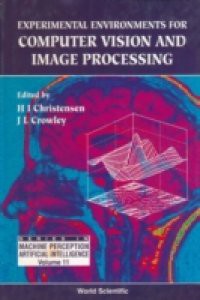To fully appreciate new methods developed in the area of machine vision it is necessary to have facilities which allow experimental verification of such methods. Experimental research is typically a very expensive task in terms of manpower, and consequently it is desirable to adopt standard facilities/methods which allow more efficient experimental investigations. In this volume a range of different experimental environments which facilitate construction and integration of machine vision systems is described. The environments presented cover areas such as robotics, research in individual machine vision methods, system integration, knowledge representation, and distributed computing. The set of environments covered include commercial systems, public domain software and laboratory prototype, showing the diversity of the problem of experimental research in machine vision and providing the reader with an overview of the area.Contents:Prototyping, Visualization and Simulation Using the Application Visualization System (C J Westelius et al.)Vision as Process: Integration and Control of a Real Time Active Vision System (J L Crowley & H Christensen)A Modular Control Architecture for Real-Time Synchronous and Asynchronous Systems (P L Butler & J P Jones)Integrating Visual Procedures for Mobile Perception (B Draper et al.)The Vision Programmers Workbench (VIPWOB) (N O S Kirkeby & H I Christensen)Module Network Tool (L Olsson)Object-Oriented Communication in Image Processing Systems (H Winwroth)and other papersReadership: Computer scientists and engineers.Key Features:Critically examines the social development issues and challenges faced by societies in Mainland China, Taiwan and Hong KongPresents a wide-ranging discussion on current and relevant issues pertaining to the effects of globalization and the prevailing global economic crisisOffers different perspectives on how societies in Greater China manage the challenges with detailed analysis on the strategies adopted to resolve them



















